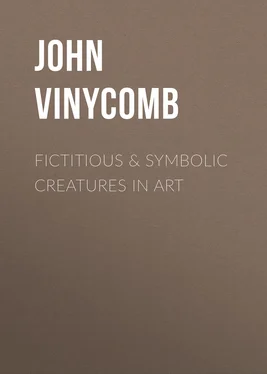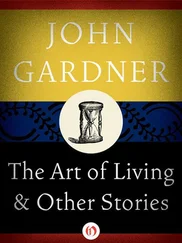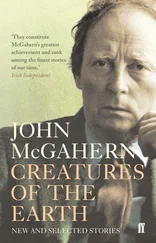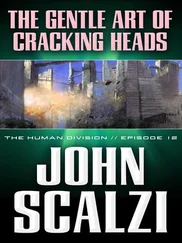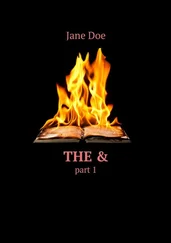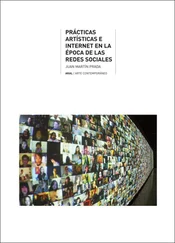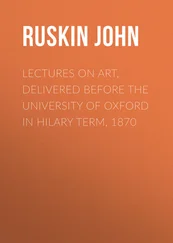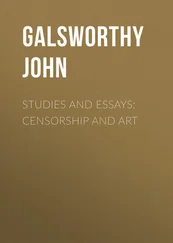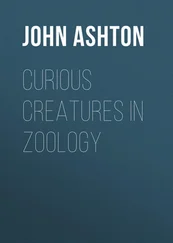John Vinycomb - Fictitious & Symbolic Creatures in Art
Здесь есть возможность читать онлайн «John Vinycomb - Fictitious & Symbolic Creatures in Art» — ознакомительный отрывок электронной книги совершенно бесплатно, а после прочтения отрывка купить полную версию. В некоторых случаях можно слушать аудио, скачать через торрент в формате fb2 и присутствует краткое содержание. Жанр: foreign_antique, foreign_home, visual_arts, на английском языке. Описание произведения, (предисловие) а так же отзывы посетителей доступны на портале библиотеки ЛибКат.
- Название:Fictitious & Symbolic Creatures in Art
- Автор:
- Жанр:
- Год:неизвестен
- ISBN:нет данных
- Рейтинг книги:3 / 5. Голосов: 1
-
Избранное:Добавить в избранное
- Отзывы:
-
Ваша оценка:
- 60
- 1
- 2
- 3
- 4
- 5
Fictitious & Symbolic Creatures in Art: краткое содержание, описание и аннотация
Предлагаем к чтению аннотацию, описание, краткое содержание или предисловие (зависит от того, что написал сам автор книги «Fictitious & Symbolic Creatures in Art»). Если вы не нашли необходимую информацию о книге — напишите в комментариях, мы постараемся отыскать её.
Fictitious & Symbolic Creatures in Art — читать онлайн ознакомительный отрывок
Ниже представлен текст книги, разбитый по страницам. Система сохранения места последней прочитанной страницы, позволяет с удобством читать онлайн бесплатно книгу «Fictitious & Symbolic Creatures in Art», без необходимости каждый раз заново искать на чём Вы остановились. Поставьте закладку, и сможете в любой момент перейти на страницу, на которой закончили чтение.
Интервал:
Закладка:
Mr. Moncure Conway (“Demonology, or Devil Lore”) says: “The opinion has steadily gained that the conventional dragon is the traditional form of some huge saurian. It has been suggested that some of those extinct saurians may have been contemporaneous with the earliest men, and that traditions of conflicts with them, transmitted orally and pictorially, have resulted in preserving their forms in fable proximately.”
“Among the geological specimens in the British Museum,” says Hugh Miller, “the visitor sees shapes that more than rival in strangeness the great dragons and griffins of mediæval legends; enormous jaws, bristling with pointed teeth, gape horrid, in stone, under staring eye-sockets a foot in diameter; and necks that half equal in length the entire body of a boa-constrictor. And here we see a winged dragon that, armed with sharp teeth and strong claws, has careered through the air on leathern wings like those of a bat.” We are also told in the sacred Scriptures by Moses of “fiery serpents,” and by Isaiah of “a fiery flying serpent.” Other monsters—dragons, cockatrices, and some of whose form we have no conception—are also mentioned. Euripides describes a dragon or snake breathing forth fire and slaughter, and rowing its way with its wings. It is evident that such a creature may at one time have existed. Looking at the widespread belief in dragons, there seems little doubt that the semi-myth of to-day is the traditional successor of a really once-existent animal, whose huge size, snake-like appearance, and possibly dangerous powers of offence made him so terrible that the earlier races of mankind adopted him unanimously as the most fearful embodiment of animal ferocity to be found.
One of the latest acquisitions in the Natural History Museum, South Kensington, is the skeleton of that enormous creature the long-limbed dinosaur ( Diplodicus Carnegii ), recently discovered in America, eighty-nine feet in length from the head to the tip of the tail, the huge bulky framework of the monster measuring eleven feet in height at the shoulder. The enormous length of its neck and tail, with relatively small head, would indicate it to be an amphibious inhabitant of the waters, feeding on the vegetation growing in its depths.
Mr. Moncure Conway, in his remarkable work, “Demonology, or Devil Lore,” describes all intermediate stages between demon and devil under the head of dragon. This he believes to be the only fabulous form which accurately describes all the transitions. Throughout all the representations of the dragon one feature is common, and that is the idealised serpent. The dragon possesses all the properties of the demon along with that of harmfulness, but differs from the devil in not having the desire of doing evil. The dragon in mythology is the combination of every bad feature in nature, all of which is combined into one horrible whole. “The modern conventional dragon,” says Mr. Conway, “is a terrible monster. His body is partially green, with memories of the sea and of slime, and partly brown or dark, with lingering shadows of storm-clouds. The lightning flames still in his red eyes, and flashes from his fire-breathing mouth. The thunderbolt of Jove, the spear of Woden, are in the barbed point of his tail. His huge wings—bat-like and spiked—sum up all the mysteries of extinct harpies and vampires. Spine of crocodile is on his neck, tail of the serpent and all the jagged ridges of rocks and sharp thorns of jungles bristle round him, while the ice of glaciers and brassy glitter of sunstrokes are in his scales. He is ideal of all that is hard, destructive, perilous, loathsome, horrible in nature; every detail of him has been seen through and vanquished by man, here or there; but in selection and combination they rise again as principles, and conspire to form one great generalisation of the forms of pain, the sum of every creature’s worst.”
“The external forms of Dragons are greatly dependent on the nature of the country in which they originate. In the far north, where exist the legends of the swan and pigeon, maidens and vampires, exists the swan-shaped dragon. As demons of excessive heat principally existed in the south, so in the north the great enemy of man was excessive cold. In the northern countries is found also the serpent element, but as serpents are there frequently harmless, this feature does not enter much into their composition. The Cuttlefish is supposed to have helped in the formation of the Hydra, which in its turn assisted in forming the dragon of the Apocalypse. Assyrian ideas also seem to have assisted in the pictorial impersonations of the hydra. This many-headed monster is a representation of a torrent, which being cut off in one direction breaks out in another. The conflicts of Hercules with the hydra are repeated in those of the Assyrian Bel with Trinant (the deep), and also in the contentions of St. Michael with the dragon. The old dragon myths left in Europe were frequently utilised by the Christians. Other saints besides St. Michael were invested with the feats of Hercules; St. Margaret, St. Andrew, and many others are pictured as trampling dragons under their feet. The Egyptian dragon is based on the crocodile, and this form being received into Christian symbolism did greatly away with other pagan monsters. The hideousness of the crocodile and the alligator could easily be exaggerated so as to suit the most horrible contortions of the human imagination. Amongst the most terrible dragons is Typhon, the impersonation of all the terrors of nature. Son of Tartarus, father of the harpies and of the winds, he lives in the African deserts; from thence fled in fear, to escape his terrible breath, all the gods and goddesses. He is coiled in the whirlwind, and his many heads are symbolical of the tempest, the scrive, the hurricane, and the tornado.”
Under the head of The Colonial Dragon Mr. Conway has embodied all the horrors and difficulties with which the early colonists would be beset. Amongst these he places the Gorgon and the Chimera. The most widely spread of all is the last named, and from it is supposed that all Christian and British dragons are descended. The Christian myth of St. George and the Dragon is but a variation of Bellerophon and the Chimera, in which the last has given place to the dragon and the pagan hero to St. George.

Japanese Dragon.
“In ancient families there are usually traditions of some far-distant ancestor having slain a desperate monster. It is always the colonial dragon that has been borrowed by poets and romancers. The Dragon killed by Guy of Warwick is but another variation of the chimera. There is again the Sockburn Worm, slain by Sir John Conyers for the devouring of the people of the neighbourhood; the well-known tradition of the Lambton Worm is in reality a modification of the Aryan Dragon of the Stormcloud; smaller than a man’s hand he swells out to prodigious dimensions.”
A favourite subject for Chinese and Japanese painting and sculpture is a dragon very much of the same type, and a monstrous representation of a dragon in the form of a huge Saurian still forms the central object at Japanese festivals.
Among the Chinese the dragon is the representation of sovereignty, and is the imperial emblem borne upon banners, and otherwise displayed as the national ensign. To the people of that vast country it represents everything powerful and imposing; and it plays an important part in many religious ceremonies and observances. Dr. S. Wells Williams, the eminent sinalogue, describes the fabulous monster of Chinese imagination in the following passage: “There are three dragons—the lung
Конец ознакомительного фрагмента.
Интервал:
Закладка:
Похожие книги на «Fictitious & Symbolic Creatures in Art»
Представляем Вашему вниманию похожие книги на «Fictitious & Symbolic Creatures in Art» списком для выбора. Мы отобрали схожую по названию и смыслу литературу в надежде предоставить читателям больше вариантов отыскать новые, интересные, ещё непрочитанные произведения.
Обсуждение, отзывы о книге «Fictitious & Symbolic Creatures in Art» и просто собственные мнения читателей. Оставьте ваши комментарии, напишите, что Вы думаете о произведении, его смысле или главных героях. Укажите что конкретно понравилось, а что нет, и почему Вы так считаете.
